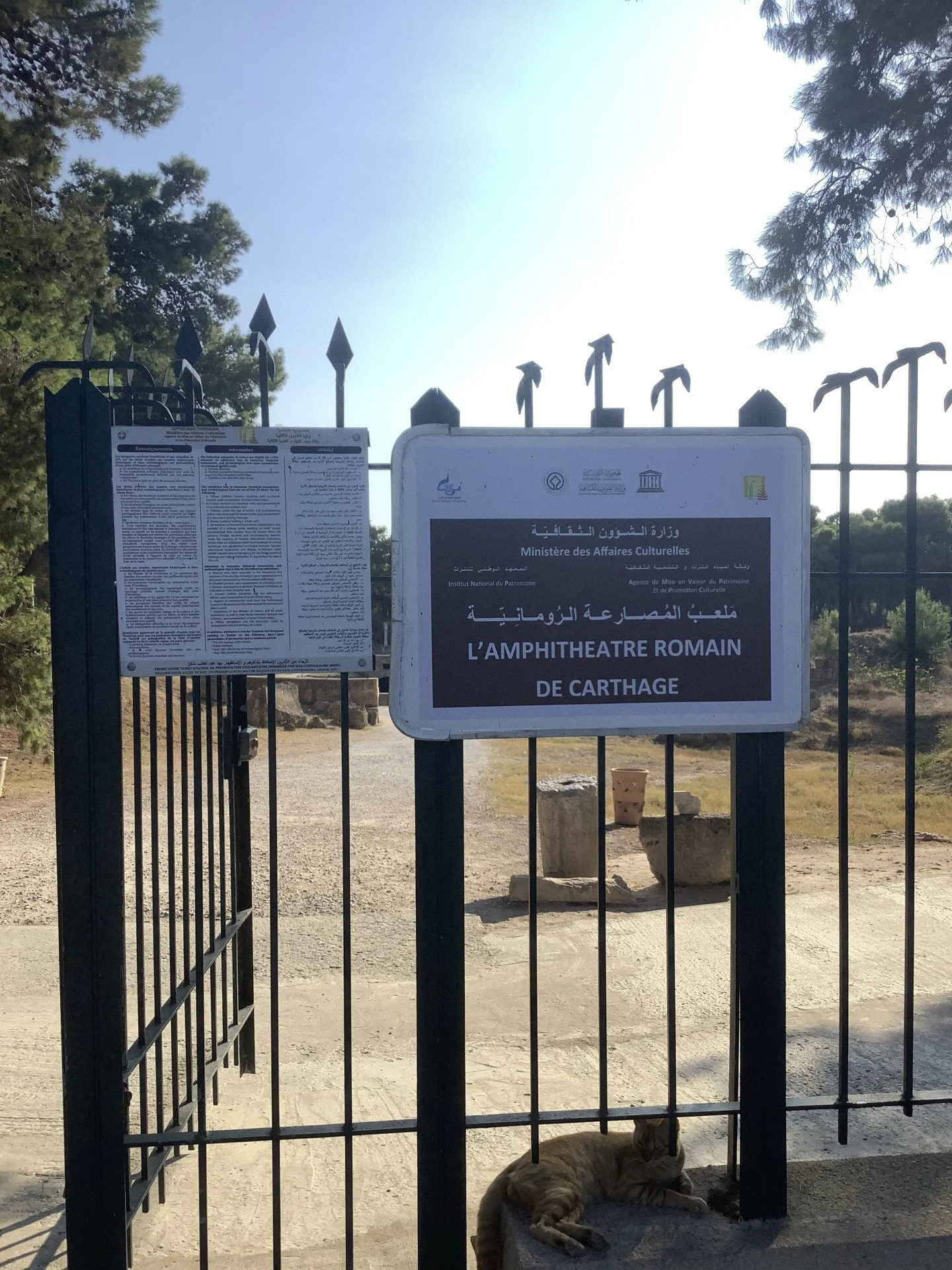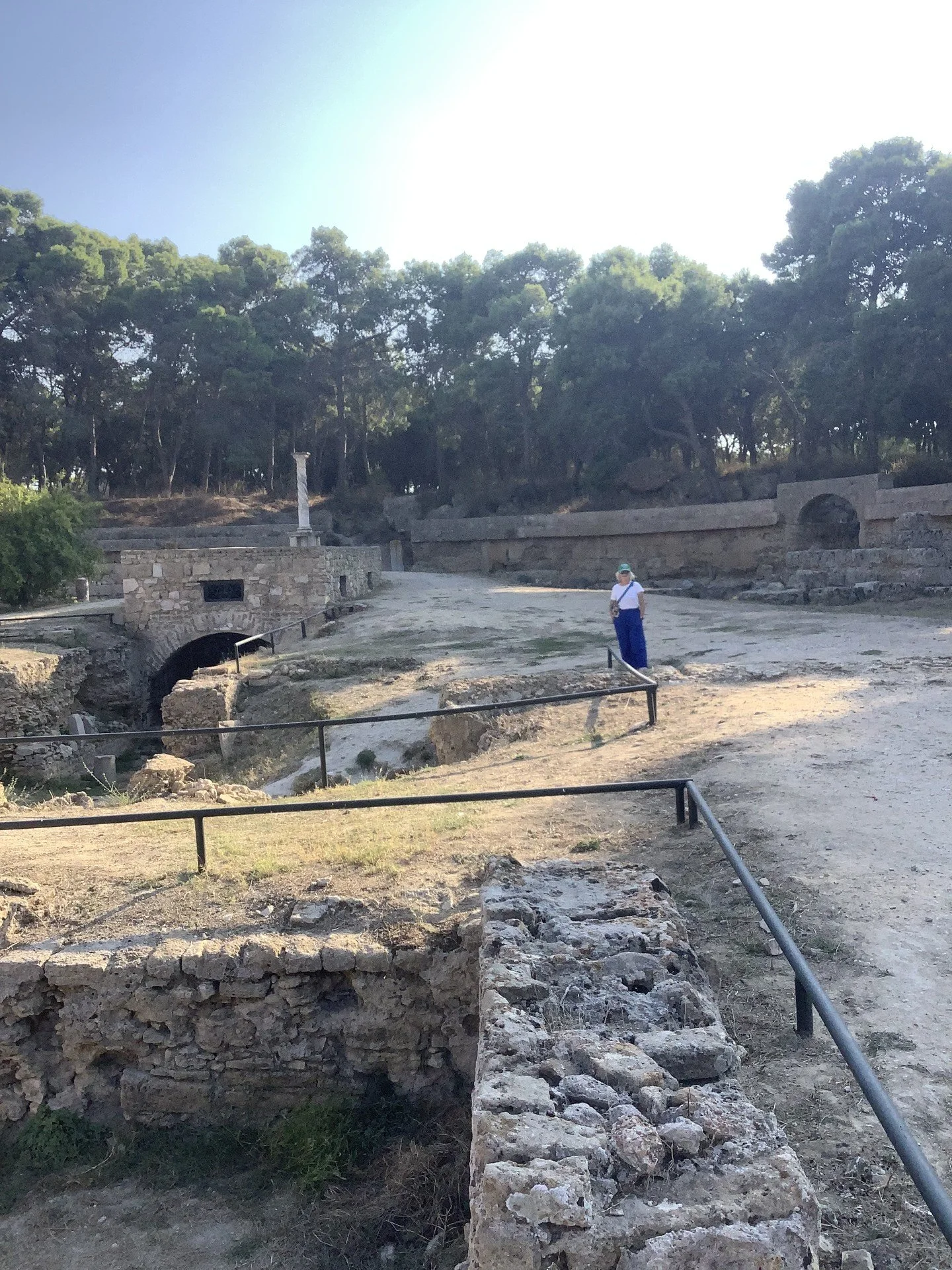XLVII Carthage (Carthago)
What3words – intend.rank.kitchen
Construction - 1st Century AD
Capacity - 30,000
Visited September 2025
Status – One of a number of remnants of the second greatest city of the Roman Empire which survive amongst subsequent development. Well preserved/restored arena. Cavea and outer arcades mostly quarried away. Remains of 19th century monument and chapel to Christian martyrs in centre.
In the 1950s before the trees.
Amphitheatre of Carthage
The second largest city of the Roman Empire (Population c.500,000) reflected the importance of the North African territory grabbed from the Carthaginians both in terms of its proximity to the Italian mainland and it’s abundant agricultural produce - particularly olives and grain. After Rome came the Byzantine era, followed by sacking and destruction by Umayyad forces in 698 AD, Crusader incursion in the 16th century and eventual incorporation into the Ottoman Empire in the 1560s. From then on it was used as a quarry to construct the new city to the south. Within the Medina of Tunis there are traditional arched Moorish doorways supported by re-used Roman columns. One example has a red granite pillar (originating in Luxor) on the left side and a grey granite one quarried in Sicily on the right. The visible in-situ remains of Carthage can be found in sporadic sites which sit between, and under swanky suburbs and walled houses (Including the Presidential Palace) at the affluent northern limits of Tunis - all conveniently near the airport.
The amphitheatre (which gets a mention on pp 65-66 of ‘Monty, My Part in his Victory’ S. Milligan - Michael Joseph 1976) was free of visitors on a bright September afternoon and shaded by picturesque date palms. The traces of a 19th century monument to the catholic saints Perpetua and Felicity and a dedicated chapel sit near the centre. This commemorated their 3rd century martyrdom in Carthage - possibly in this very venue.
Contemporary accounts suggest the surrounding outer wall of ‘fifty arches’ survived into the 11th century before quarrying and looting took their toll. Its 30,000 capacity would have made this one of the largest in the empire.
Ironically, the ‘People’s Front of Judea’ and gladiatorial combat scenes of Monty Python’s Life of Brian, were filmed a short distance away in the semi-circular Roman theatre, which was set-dressed to look like an amphitheatre (as it had more substantial seating remaining).




